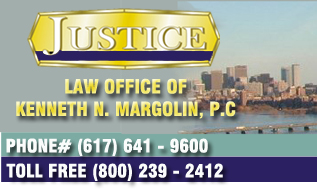

 |
 |
|
Comparative & Contributory Negligence Comparative and contributory negligence are defenses available to mitigate the amount that a defendant may have to pay to a plaintiff for damages. Each of these defenses is based on an assessment of fault towards the plaintiff. Depending upon the laws of the state where the case is venued one of three different versions of these defenses may be applicable. Pure contributory negligence is, by far, the most oppressive to the plaintiff. In those states that allow this defense if a defendant can prove that the plaintiff is one iota to blame for the accident, then he or she recovers nothing. For instance, if the evidence shows that a defendant was speeding and went through a stop sign and that the plaintiff was only one percent at fault because he or she didn't swerve or brake quickly enough, then the plaintiff may be entitled to no recovery. Less oppressive to the plaintiff and more prevalent are the two different versions of comparative negligence. The first version is what is commonly known as "pure" comparative negligence. In "pure" comparative negligence, the award of damages to the plaintiff will be reduced in direct proportion to the plaintiff's percentage of fault, no matter what the ratio. For instance, if you are 30 percent at fault for an accident, you could recover 70 percent of your damages. If you are 70 percent at fault for an accident, you could recover only 30 percent of your damages. All of the other parties alleged to be at fault would then be responsible for paying you 30% of your total damages, apportioned between them in proportion to the amount of fault assigned to them. The last of these defenses is also fairly common amongst the states. It is known as "limited" comparative negligence. With this version in order to be able to receive any damages, the plaintiff must be no more than 50 percent at fault for the injury. If the plaintiff is no more than 50 percent liable, but is still partially at fault, then the award of damages will be adjusted according to the plaintiff's percentage of fault and the plaintiff's award will be reduced accordingly. For example, suppose a jury awards you $100,000 in damages as a result of a car accident, but it finds you 30 percent at fault for your injuries because you did not properly use a signal. After applying comparative negligence, you would be entitled to $70,000 in damages - $100,000 minus 30 percent. In the above example, the judge or jury determines the degree of the each party's negligence and apportions to each party a percentage of the total damages suffered, based on each party's percentage of fault for causing your injury. If you were found to be 51 percent liable, you would be unable to collect any amount. If you or a loved one is in need of legal assistance, call The Law Office of Kenneth N. Margolin, P.C. at (617) 641-9600 or toll free (800) 239-2412 or submit an online questionnaire. The initial consultation is free of charge, and if we agree to handle your case, we will work on a contingency fee basis, which means we get paid for our services only if there is a monetary recovery of funds. In many cases, a lawsuit must be filed before an applicable expiration date, known as a statute of limitations. Please call right away to ensure that you do not waive your right to possible compensation. |


 |
|||||
This
website is intended to provide information about the Law Office of Kenneth
N., Margolin, P.C. , and is not intended to provide legal advice, nor
is it a substitute for legal counsel. Contacting us or submitting a case
description does not create an attorney-client relationship. We will attempt
to answer all inquiries, but are under no legal obligation to do so. Compliance
with all notice requirements and statutes of limitations remains your
sole responsibility. An attorney-client relationship with us cannot be
created by telephone or email, but only by a written retainer agreement
signed by both attorney and client.
© Copyright 2019 – Margolin Law, All Rights Reserved. | ||||||